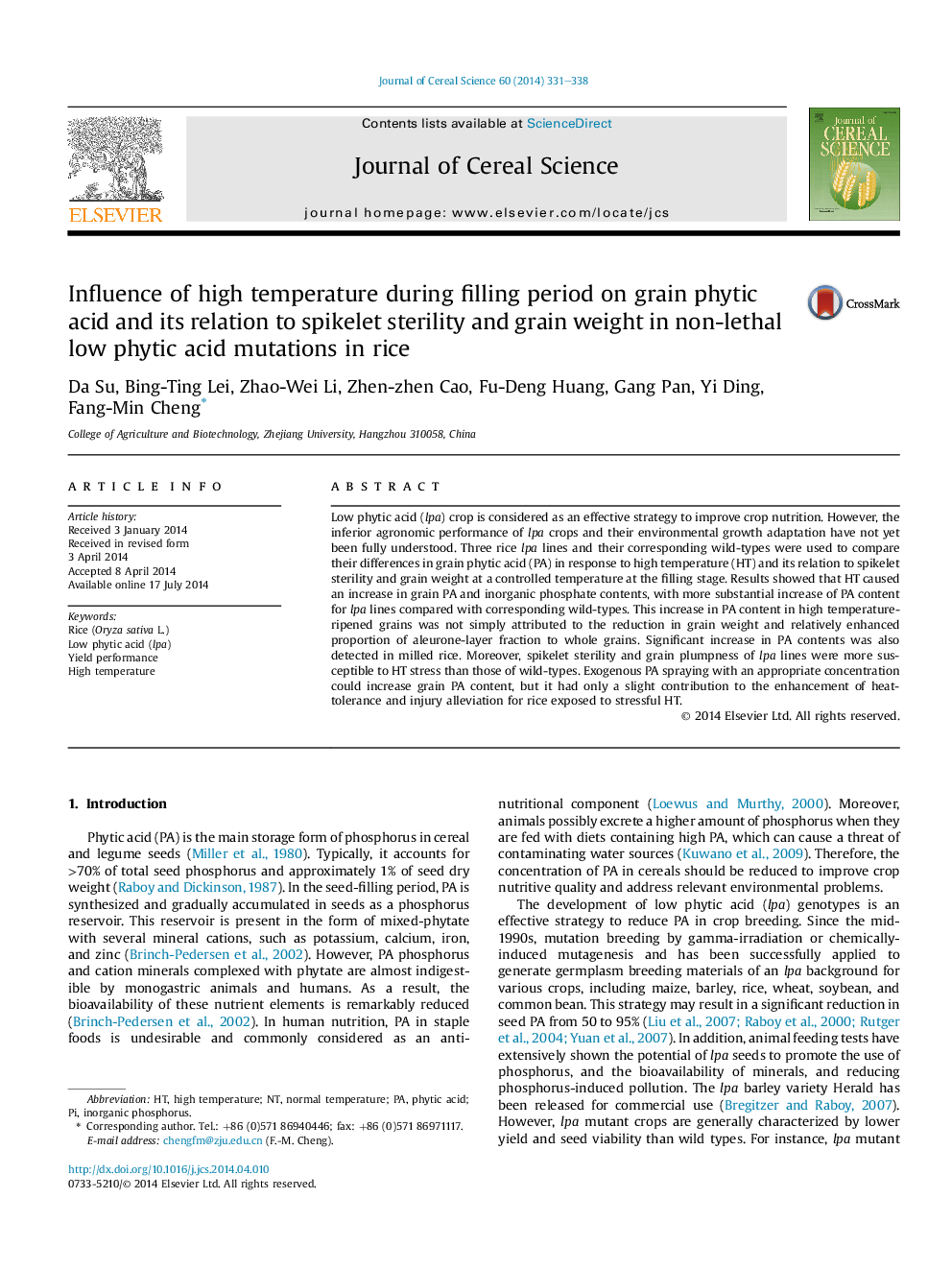| Article ID | Journal | Published Year | Pages | File Type |
|---|---|---|---|---|
| 4515846 | Journal of Cereal Science | 2014 | 8 Pages |
•High temperature increased phytic acid (PA) content in brown and milled rice grains.•Low phytic acid rice had poor adaptability to high temperature for its sterility and grain yield.•Exogenous PA increased grain PA, but slightly contributed to rice heat-tolerance.
Low phytic acid (lpa) crop is considered as an effective strategy to improve crop nutrition. However, the inferior agronomic performance of lpa crops and their environmental growth adaptation have not yet been fully understood. Three rice lpa lines and their corresponding wild-types were used to compare their differences in grain phytic acid (PA) in response to high temperature (HT) and its relation to spikelet sterility and grain weight at a controlled temperature at the filling stage. Results showed that HT caused an increase in grain PA and inorganic phosphate contents, with more substantial increase of PA content for lpa lines compared with corresponding wild-types. This increase in PA content in high temperature-ripened grains was not simply attributed to the reduction in grain weight and relatively enhanced proportion of aleurone-layer fraction to whole grains. Significant increase in PA contents was also detected in milled rice. Moreover, spikelet sterility and grain plumpness of lpa lines were more susceptible to HT stress than those of wild-types. Exogenous PA spraying with an appropriate concentration could increase grain PA content, but it had only a slight contribution to the enhancement of heat-tolerance and injury alleviation for rice exposed to stressful HT.
